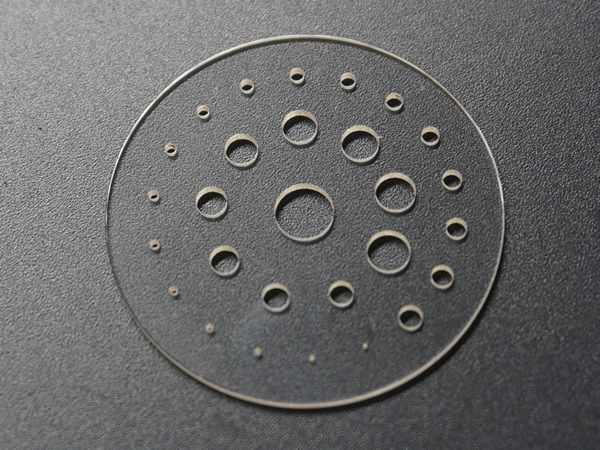
Time:2024-10-29
Sapphire chemically resistant glass is a material that occupies an important position in the industrial field. Its unique properties and wide applications not only reflect the progress of modern materials science, but also profoundly affect the development trajectory of multiple industries. This article will analyze the charm of this material from several aspects such as its origin, manufacturing process, physical and chemical properties, and application fields.
1、 Origin and Manufacturing Process
Sapphire chemically resistant glass is a highly purified aluminum oxide (Al ₂ O3) crystal, and the industrial use of sapphire is vastly different from the natural gemstone sapphire in terms of usage and preparation process. Sapphire in nature is mainly formed by the mixture of aluminum oxide and trace elements such as iron and titanium, with diverse colors, while industrial sapphire pursues high purity and uniform crystal structure to achieve excellent physical and chemical properties.
The manufacturing of industrial sapphire begins with pure alumina powder, which gradually crystallizes into large-sized single crystal or polycrystalline blocks through specific growth techniques under high temperature (usually exceeding 2000 ° C) and high pressure environments. Subsequently, these primitive crystal blocks undergo precise cutting, polishing, and grinding processes to become sapphire glass products with smooth surfaces and high transparency. During this process, each step requires strict control of temperature, pressure, and atmospheric conditions to ensure the quality and performance of the product.

2、 Physical and chemical properties
Sapphire chemically resistant glass stands out among many industrial materials due to its physical and chemical properties. It has high hardness (Mohs hardness up to 9), making sapphire glass excellent in terms of scratch resistance and wear resistance, far superior to traditional glass or plastic materials. Secondly, sapphire glass has excellent chemical stability and can resist the corrosion of most acids, bases, and organic solvents. This characteristic is particularly important in chemical, medical, and other applications that require high corrosion resistance. In addition, sapphire glass also has high transparency, with good transmittance in the range of ultraviolet to infrared light, making it widely used in optical instruments, display screens, and other fields.
3、 Application Fields
1. In the field of optics and optoelectronics, sapphire glass has become an ideal material for optical lenses due to its high transparency and chemical stability. The application of sapphire glass in camera protection glass for consumer electronics products such as smartphones and smartwatches is becoming increasingly popular. Meanwhile, sapphire glass also plays a key role in optoelectronic devices such as LED lighting, lasers, and infrared detectors.
2. Semiconductor industry: In the semiconductor manufacturing process, sapphire, as the substrate material for LED epitaxial growth, has become an indispensable part of LED chip production due to its good lattice matching with semiconductor materials such as gallium nitride (GaN). In addition, sapphire is also used as a substrate and packaging material for MEMS (Micro Electro Mechanical Systems) devices.
3. Chemical and Medical: The corrosion resistance and high temperature stability of sapphire glass make it occupy a place in the manufacturing of chemical pipelines, valves, pump bodies, and other equipment. Meanwhile, in the medical field, sapphire glass is used as a key component in the production of surgical instruments, artificial joints, and other medical devices due to its biocompatibility and wear resistance.
4. Aerospace and Defense: Sapphire glass is used in the production of windows, observation mirrors, infrared transmission covers, and other components in aerospace and defense equipment that operate in extreme environments due to its excellent physical properties, to ensure the normal operation of equipment under harsh conditions and the safe observation of personnel.
Sapphire chemically resistant glass, as a material that combines high hardness, high transparency, and high chemical stability, has broad and challenging application prospects in the industrial field. With continuous technological breakthroughs and market expansion, sapphire glass will showcase its unique charm and value in more fields.
Tel
Mobile phone
Customer service
TOP